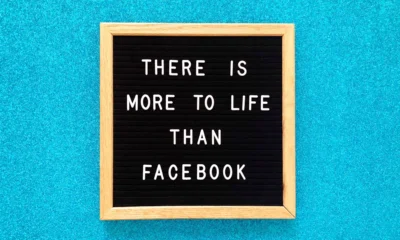Exploring the transformative role of social media in fostering crosscultural communication, understanding, and global connections.
The digital age has revolutionized the way we communicate and connect with people around the world. Social media, in particular, has emerged as a powerful tool for fostering crosscultural communication. It transcends geographical boundaries, bringing individuals from diverse backgrounds and cultures together. In this article, we delve into the fascinating world of social media and its role in bridging global divides, promoting understanding, and strengthening crosscultural connections.
The Global Village
The term “global village,” coined by Canadian philosopher Marshall McLuhan, describes a world brought closer together by electronic communication. Social media has been instrumental in turning this concept into a reality. Here’s how:
1. Instantaneous Communication
Social media platforms like Facebook, Twitter, and Instagram allow users to connect in realtime, no matter where they are in the world.
Instant messaging, video calls, and audio messages break down the barriers of time zones and geographical distances.
2. Cultural Exchange
Users can share their cultural experiences, traditions, and stories through posts, images, and videos.
This exchange of cultural content facilitates mutual understanding and appreciation.
3. Community Building
Social media is a platform for forming online communities based on shared interests, hobbies, and cultural backgrounds.
These communities provide a sense of belonging and connection for people around the world.
4. Learning Opportunities
Users can learn about different cultures, languages, and global issues through social media content.
Educational initiatives and language exchange groups thrive on these platforms.
The Power of Visual Communication
Visual content plays a pivotal role in crosscultural communication. Images and videos transcend language barriers and have a universal appeal. Visual content on social media includes:
1. Travel Content
Travel bloggers and influencers share their experiences through captivating photos and videos.
Users get a glimpse of destinations, traditions, and lifestyles around the world.
2. Food and Cuisine
Images of diverse cuisines and recipes provide insight into the culinary traditions of different cultures.
Users can explore and even attempt to recreate international dishes.
3. Festivals and Celebrations
Visuals of festivals, ceremonies, and celebrations showcase the rich cultural diversity across the globe.
Users can participate virtually by learning about and even joining in these events.
4. Art and Creativity
Artists, designers, and creators share their work, often inspired by their cultural backgrounds.
Users gain exposure to unique forms of artistic expression.
CrossCultural Collaboration
Social media has enabled crosscultural collaborations that were once logistically challenging. Musicians, artists, writers, and professionals from different countries now easily connect and work together. These collaborations often lead to the creation of innovative and culturally diverse content.
Challenges in CrossCultural Communication
While social media has done much to bridge global divides, it’s not without challenges:
1. Language Barriers
Not all social media content is available in multiple languages, making it difficult for nonEnglish speakers to access valuable information.
2. Cultural Misunderstandings
Differences in cultural norms and values can lead to misunderstandings, especially when users engage with people from cultures they are less familiar with.
3. Digital Divide
Access to social media and technology is not universal, leaving those in less developed regions at a disadvantage in crosscultural communication.
4. Filter Bubbles
Algorithms on social media platforms can create “filter bubbles,” where users are exposed to content that aligns with their existing beliefs, limiting their exposure to diverse perspectives.
Platforms Fostering CrossCultural Communication
Several social media platforms have been especially effective in bridging global divides:
1. Instagram: This imagecentric platform has become a hub for visual crosscultural exchange, from travel photos to culinary delights and artistic creations.
2. TikTok: Short video content on TikTok allows users to showcase cultural traditions, dances, and unique content from around the world.
3. YouTube: Content creators on YouTube offer extensive educational and crosscultural content, from language tutorials to travel vlogs.
Future of CrossCultural Communication
The future of crosscultural communication through social media is exciting, with potential advancements including:
Virtual Reality (VR) Experiences: Users may engage in immersive crosscultural experiences that replicate travel or cultural events.
Language Translation Tools: Improved translation tools will facilitate realtime conversations between people speaking different languages.
Cultural Awareness Initiatives: Platforms may launch initiatives to promote crosscultural understanding and awareness.
FAQs Frequently Asked Questions
Q1: Can social media really bridge global divides and promote crosscultural understanding?
A1: Yes, social media has a significant impact on promoting crosscultural communication by facilitating instantaneous communication, cultural exchange.

 Technology & Innovation6 years ago
Technology & Innovation6 years ago
 Technology & Innovation7 years ago
Technology & Innovation7 years ago
 Technology & Innovation10 months ago
Technology & Innovation10 months ago
 Technology & Innovation7 years ago
Technology & Innovation7 years ago
 Technology & Innovation10 months ago
Technology & Innovation10 months ago
 Technology & Innovation10 months ago
Technology & Innovation10 months ago
 Technology & Innovation10 months ago
Technology & Innovation10 months ago


